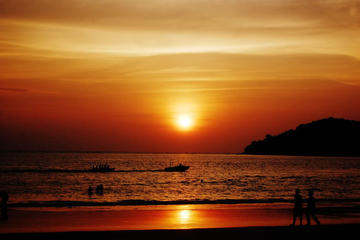Malaysia is considered the most culturally diverse and ecologically advanced country globally. This is because it is famous for its natural beauty and rich tourist spots for adventurers.
Malaysia is also known for its customs, culture, and traditions, which include a mixture of old and modern attire.
If you are planning a trip to this country, make sure to visit islands, towns, beaches, heritage sites, etc. But before that, create a list of all the places you want to explore when traveling through Malaysia.
Moreover, this requires you to apply for a visa to enter and stay in the host country legally. Therefore, read the following article to learn about the essential details needed for your next adventure.
Information about Malaysia
As a country in Southeast Asia, Malaysia is further divided into two regions known as Borneo’s East Malaysia and Peninsular Malaysia. Furthermore, the constitutional monarchy is the style of the government in the country.
It has thirteen states and almost three federal territories. Both regions join their borders with the countries including,
- Thailand
- Singapore
- Vietnam
- Indonesia
- Brunei
- Philippines
Famous Cities of Malaysia
The capital and the largest city of the nation is Kuala Lumpur. In addition, it is the legislative branch of the federal government. On the other hand, the administrative center of Malaysia is Putrajaya.
The city has two famous seats known as the judicial branch and the executive branch (cabinet, federal ministry, and federal agency) of the government.
Ethnicity of population
Malaysia is a multicultural and multiethnic country, directly affecting the country’s politics. The majority of the population is Malay ethnically, whereas, the rest of the residents are Indians, Chinese, and indigenous peoples.
Natural resources are the main reason for the country’s growing economy. However, medical tourism, commerce, and tourism contribute to it as well.
Common language
Malaysian Malay is the official language of the country. Whereas, English is considered the second language that is active throughout the state.
The official religion of the people of Malaysia is Islam. However, the country gives equal rights to the non-Muslim community.
Lastly, the state head is chosen after every five years from the nine state sultans. The Prime Minister is the head of the government.
6 Best Places to Visit in Malaysia
As you get to know the basic information about Malaysia, this is the best time to explore the best places that you can visit when visiting the country. So, ensure to add the following famous places to your bucket list.
In addition, you can explore the country on your own.
1. Penang
Penang is aka the Pearl of the Orient. It is famous for its architecture, white sandy beaches, hotels, and gastronomic delights. Moreover, the culture of the country observes a modern blend with the presence of mosques, buildings, and temples.
In addition, Penang is a UNESCO World Heritage Site and one of the most famous spots for all Southeast Asian street food.
2. Langkawi Island
If you want to witness the crystal-clear quality of water, then, Langkawi Island is the best place for this. The destination is known for its sandy beaches and blue azure water that attracts the traveler’s attention.
Moreover, it is also a UNESCO World Heritage Site and the top favorite tourist spots in Malaysia. Moreover, Cable Car is the ideal sport that you can do while visiting this island.
3. Danum Valley
The jungles of eastern Sabah have the mesmerizing Danum Valley. It is the primary rainforest filled with several types of fauna and tropical flora such as leopard, monkey, 250+ bird species, sun bears, etc.
One of the largest wildlife lodges, the Borneo Rainforest Lodges is also present here. This Danum Valley will allow you a canopy walk with almost 1000 ft of rope on the bridge of a 130 million-year-old ironwood tree.
4. Pulau Tioman
Pulau Tioman is one of the smallest islands of the Peninsular Malaysia. The place is considered as a heaven on earth. If you travel to Malaysia, ensure to visit the place as the green and dense forests with blue waters will attract your attention instantly.
Unfortunately, this place is not frequently traveled by tourists coming to Malaysia from all over the world. This is because the place becomes deserted during the monsoon season (November to February).
5. Kota Kinabalu National Park
Borneo’s capital city, Sabah, has a historical place, known as Kota Kinabalu (KK) National Park. You can get an amazing experience by engaging yourself in shopping or dining. Moreover, numerous resorts are available across Gaya Island.
Kota Kinabalu National Park is located near Mount Kinabalu. This mountain is the highest peak in Southeast Asia. You can visit the place which is a one-day trip from the main city.
6. Sipadan Island
Near Semporna in Sabah, sip Adan Island is one of the amazing tourist spots in Malaysia. However, to explore this limestone pinnacle, you must get your permit in advance.
In addition, the place has several species of unique fauna and bizarre flora to make your trip memorable. This island is also connected with Kuala Lumpur. That is the reason why Sip Adan is one of the best islands near the capital city.
Legal Requirements to Travel to Malaysia
Traveling to Malaysia also requires you to apply for a visa from your home country. So, the following legal requirements should be fulfilled to turn your dreams into reality.
- Firstly, make sure to submit your passport valid for almost six months ahead of your departure from Malaysia.
- You are also required to attach two passport-size pictures with your visa application form.
- Moreover, proof of accommodation is a necessary visa requirement that you must have in the form of a hotel reservation or a rental contract.
- In addition, visit RFV Travels to learn about how to book a flight without paying. You can reserve your flight valid for almost two weeks. After that, you can convert it into an actual ticket.
- Writing a cover letter will help the authorities assess your travel and flight plans. You can discuss information related to the duration of your trip, the complete travel itinerary, when you will return to your home country, etc.
Final Thoughts
This blog post has discussed some of the most famous tourist spots of Malaysia you can visit. However, you are not restricted to them and can explore other places on your own. Have a happy journey!
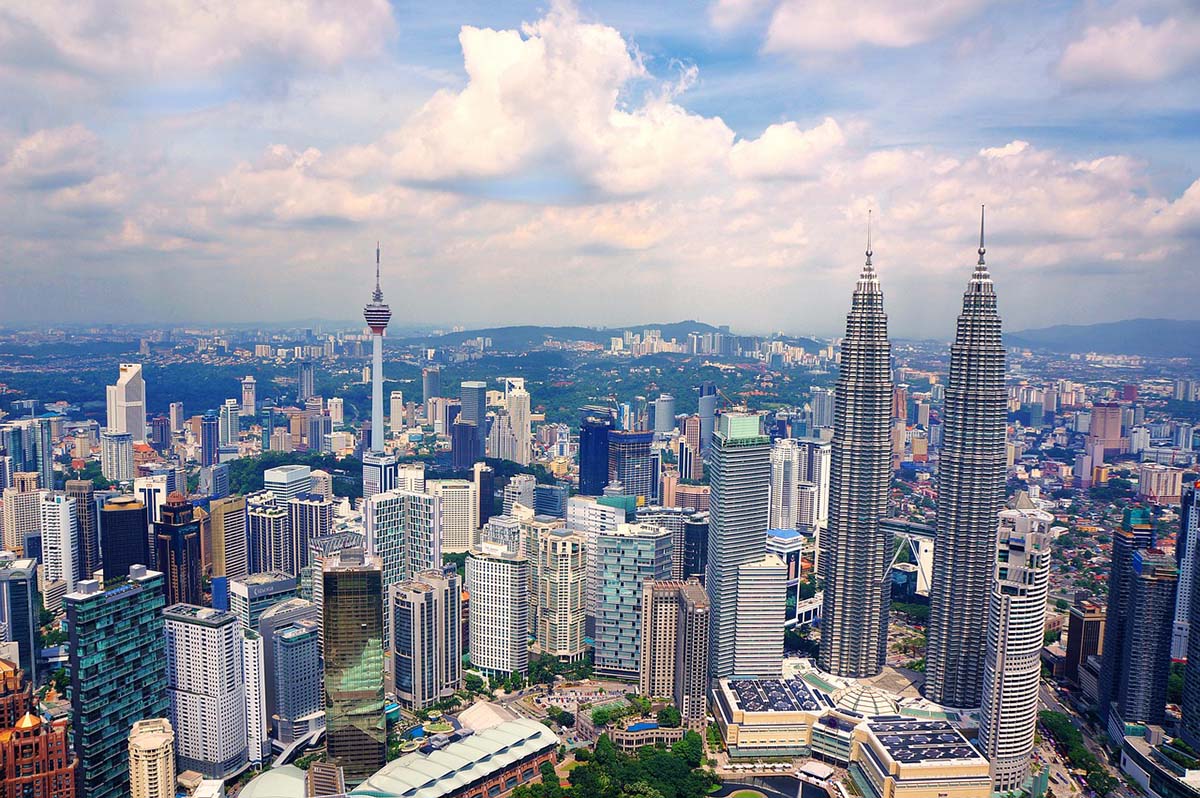
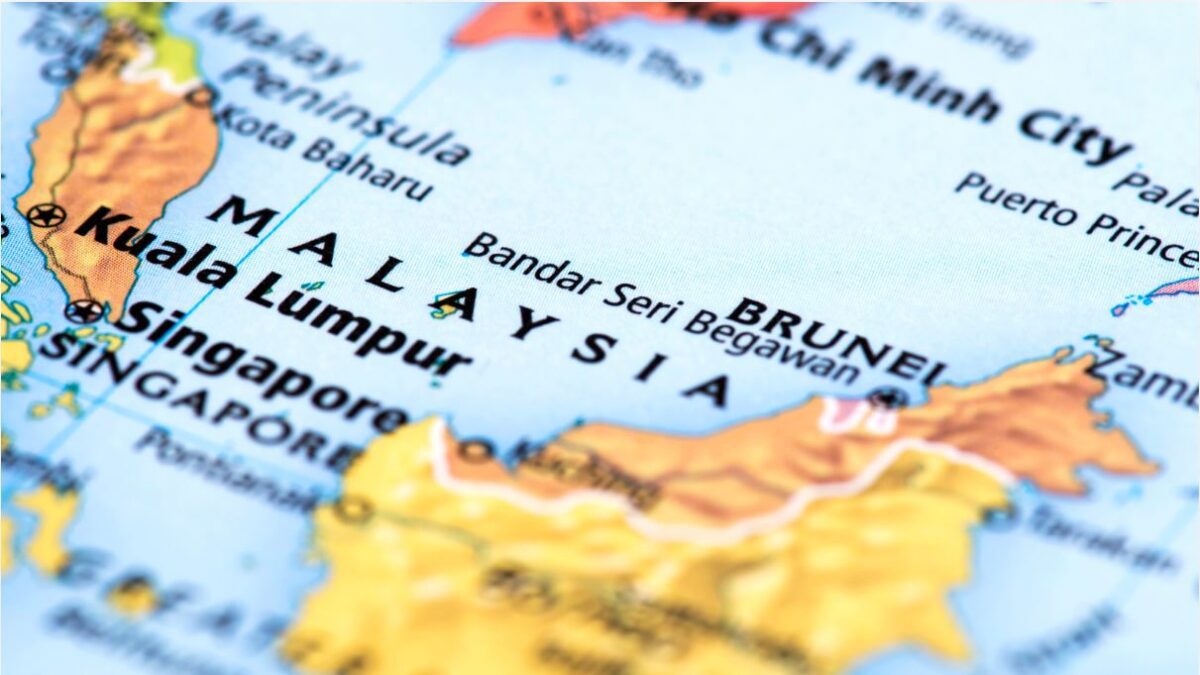

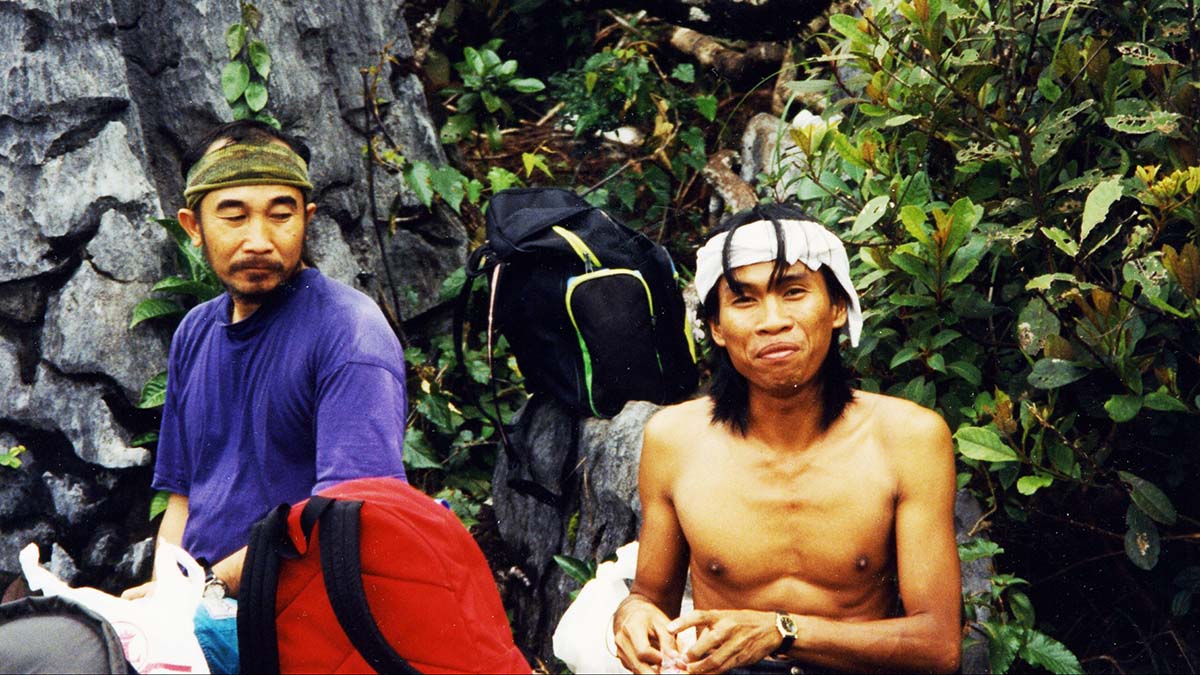


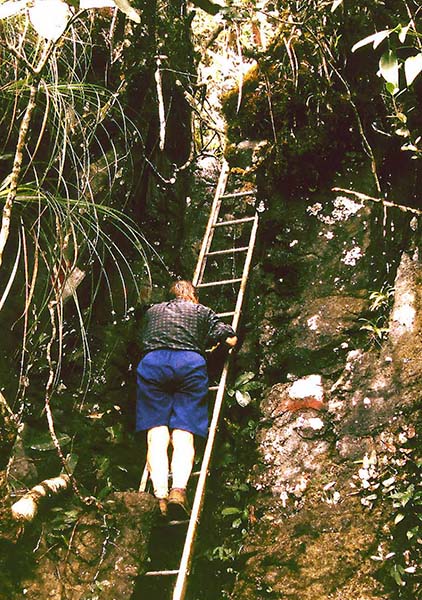 To make the trip more exciting we have to climb aluminium ladders for many steep or vertical rock sections. A total of fifteen ladders, Sham tells us, since he was a member of the trail crew that installed them. This trek turns out to be quite a workout for the old legs and arms. The hiking poles are life savers even if they are sometimes in the way, dangling from our wrists, as we scramble up the many ladders.
To make the trip more exciting we have to climb aluminium ladders for many steep or vertical rock sections. A total of fifteen ladders, Sham tells us, since he was a member of the trail crew that installed them. This trek turns out to be quite a workout for the old legs and arms. The hiking poles are life savers even if they are sometimes in the way, dangling from our wrists, as we scramble up the many ladders.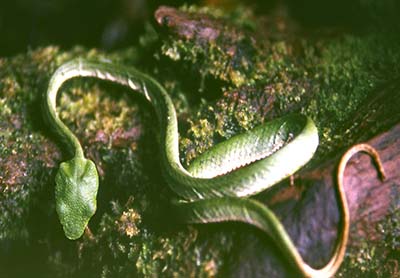 I have just reached the top rung of another steep ladder leading to a wide, rocky platform when I come face to face with a snake coiled on a boulder, staring at me. “Watch out! a snake here, it’s a green one!” I shout as a warning to Esther who is climbing on the ladder just below me. “It’s only a small pit viper!” is Sham’s reassuring cry. I am lucky enough to have the camera ready, the little creature must be scared because it stays absolutely motionless while I quickly take a shot.
I have just reached the top rung of another steep ladder leading to a wide, rocky platform when I come face to face with a snake coiled on a boulder, staring at me. “Watch out! a snake here, it’s a green one!” I shout as a warning to Esther who is climbing on the ladder just below me. “It’s only a small pit viper!” is Sham’s reassuring cry. I am lucky enough to have the camera ready, the little creature must be scared because it stays absolutely motionless while I quickly take a shot.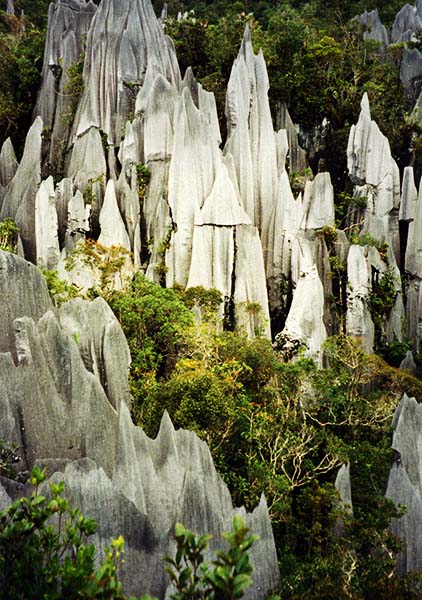 Within less than half an hour the view of the fantastic limestone “forest” is obscured by the lowering clouds. As a consolation, we have a nice lunch and a good rest with leisure to admire the beautiful red throated pitcher plants growing profusely on the inside edge of the platform and nearby a small garden of white Impatiens flowers.
Within less than half an hour the view of the fantastic limestone “forest” is obscured by the lowering clouds. As a consolation, we have a nice lunch and a good rest with leisure to admire the beautiful red throated pitcher plants growing profusely on the inside edge of the platform and nearby a small garden of white Impatiens flowers.
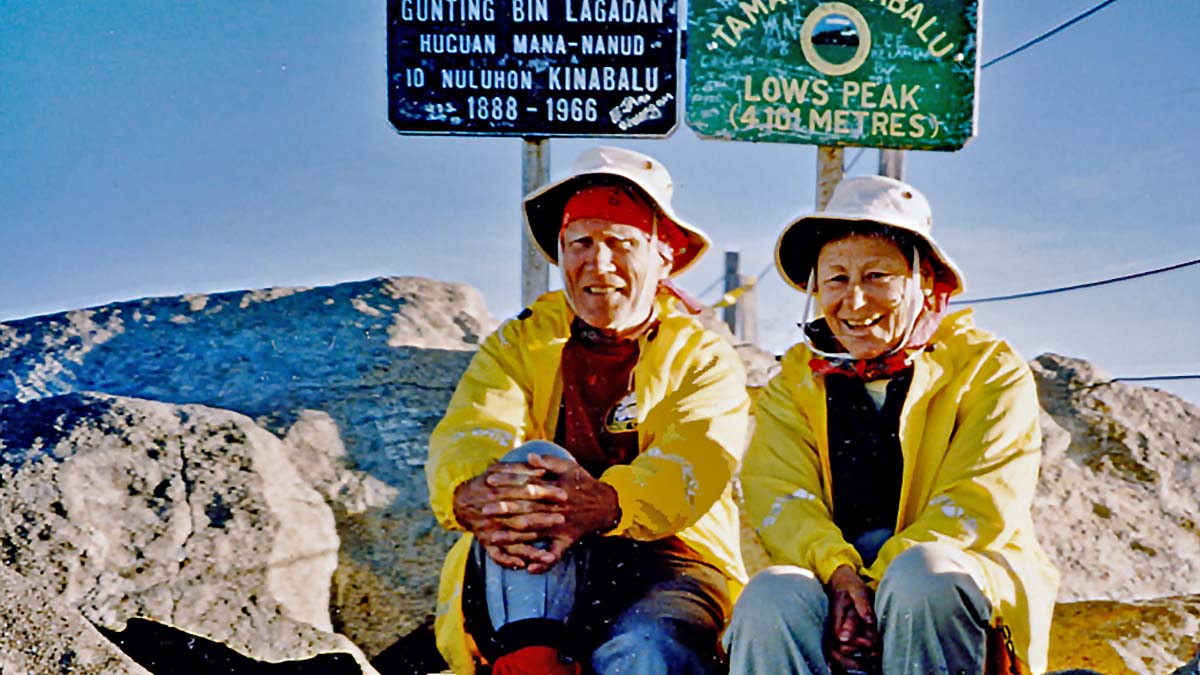

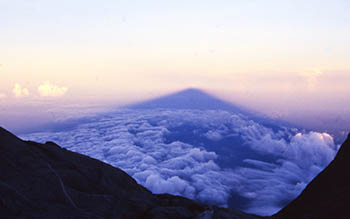 Next day we secure reservations for four nights in a cabin at Kinabalu Park headquarters and one night at the Laban Rata mountain huts high on a ridge of Mt. Kinabalu. A quick visit to the bank next door to change some dollars into ringgit and we are ready to finally have breakfast at the café we had spotted on the way. Our first taste of roti canai telur is a savoury delight – it is a Malay specialty: swirled eggs wrapped in a tasty, extra thin, large crepe made with chickpea flour, and fried on a very hot tin plate. We enjoy it with coffee here and whenever we have the chance during our four weeks in Malaysia.
Next day we secure reservations for four nights in a cabin at Kinabalu Park headquarters and one night at the Laban Rata mountain huts high on a ridge of Mt. Kinabalu. A quick visit to the bank next door to change some dollars into ringgit and we are ready to finally have breakfast at the café we had spotted on the way. Our first taste of roti canai telur is a savoury delight – it is a Malay specialty: swirled eggs wrapped in a tasty, extra thin, large crepe made with chickpea flour, and fried on a very hot tin plate. We enjoy it with coffee here and whenever we have the chance during our four weeks in Malaysia.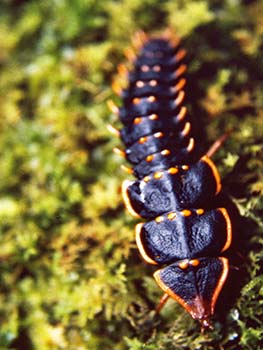 During the next two days we take long hikes in the surrounding hills which are covered in dense forest. These walks on good trails are not just excellent exercise but also delight us with the variety of exotic trees, many with enormous trunks reaching high into the canopy. We enjoy the abundance of fragrant jungle flowers, exquisite orchids of all sizes and colours, and a myriad creepy crawlies, like spiders, ants, moths and butterflies. The most unusual bug we spot turns out be a Trilobite beetle larva, a tiny beautiful black and red creature. At the dinner table I describe it to an Australian visitor, who happens to be an entomologist on a study tour. He exclaims in an envious tone: “You two are so lucky to see one, it is a very elusive insect, I have never seen one myself.
During the next two days we take long hikes in the surrounding hills which are covered in dense forest. These walks on good trails are not just excellent exercise but also delight us with the variety of exotic trees, many with enormous trunks reaching high into the canopy. We enjoy the abundance of fragrant jungle flowers, exquisite orchids of all sizes and colours, and a myriad creepy crawlies, like spiders, ants, moths and butterflies. The most unusual bug we spot turns out be a Trilobite beetle larva, a tiny beautiful black and red creature. At the dinner table I describe it to an Australian visitor, who happens to be an entomologist on a study tour. He exclaims in an envious tone: “You two are so lucky to see one, it is a very elusive insect, I have never seen one myself.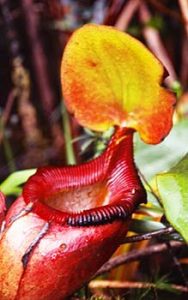
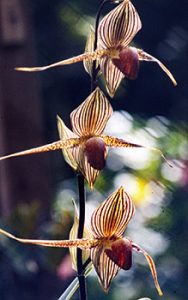


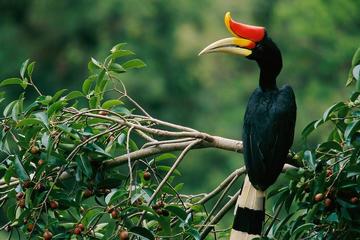
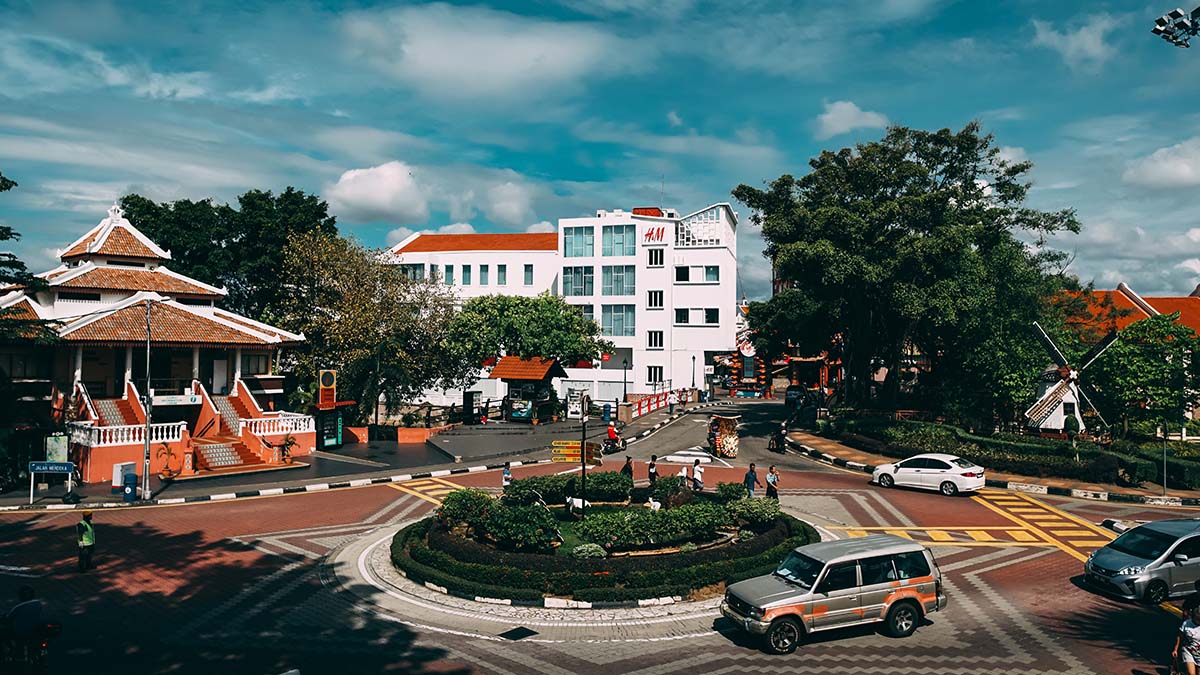
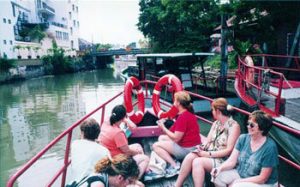
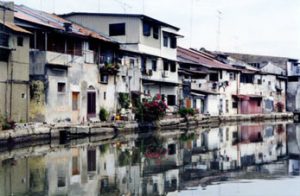

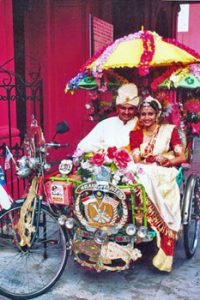
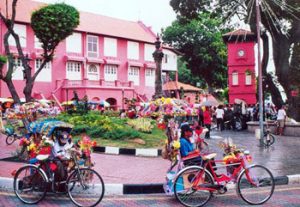
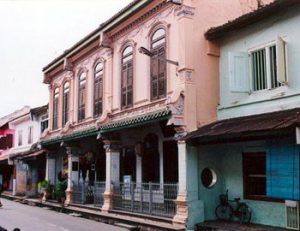
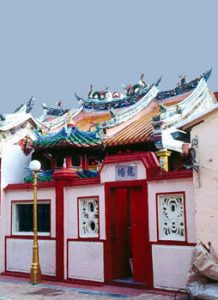
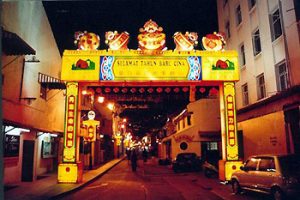
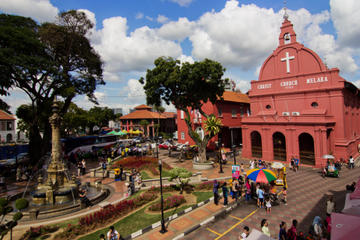
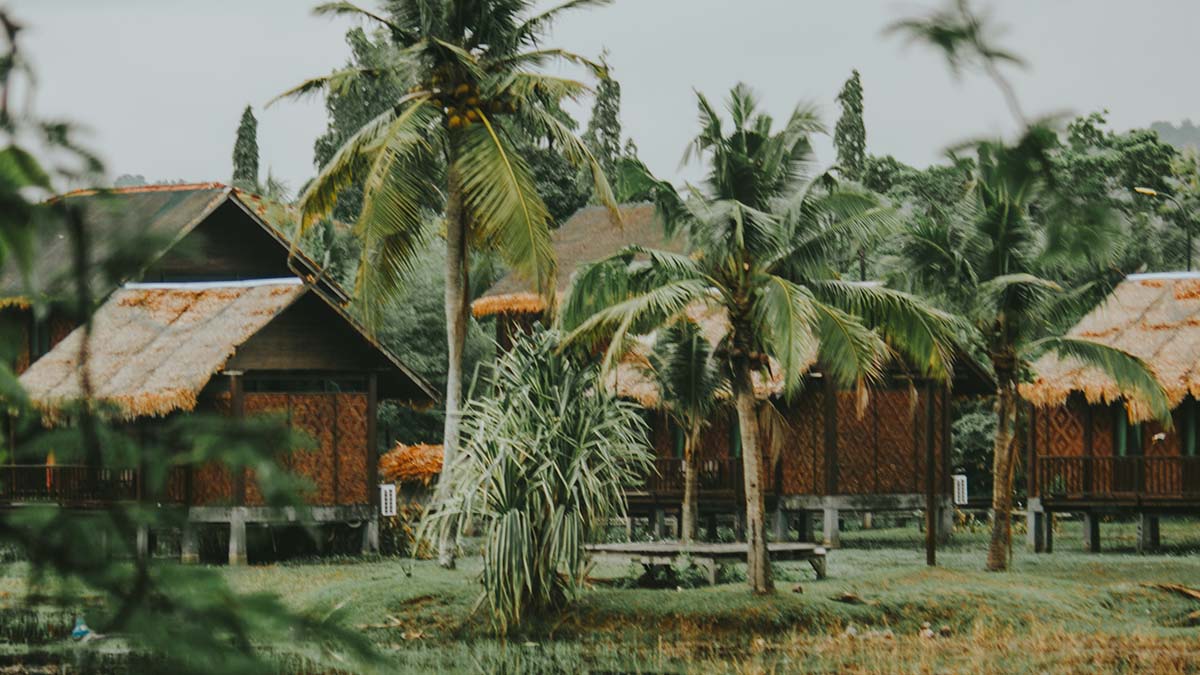
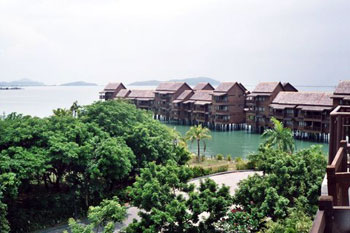 Langkawi is the largest in a group of 99 islands nestled off the north-west coast of Malaysia just south of Thailand. The island attracted seafarers and traders bringing spices and silks from China and India. But pirates plied the turquoise waters of the Adaman Sea and while Penang, Malacca and Singapore became significant trading centres, Langkawi lay forgotten, ignored by the passing merchant ships. Was it because they feared the pirates who lurked in the hidden coves? Or was it because of the curse that a beautiful maiden had put on the island when she was cruelly executed for a crime she did not commit. The story of Makran Maksuri is just one of Langkawi’s many legends.
Langkawi is the largest in a group of 99 islands nestled off the north-west coast of Malaysia just south of Thailand. The island attracted seafarers and traders bringing spices and silks from China and India. But pirates plied the turquoise waters of the Adaman Sea and while Penang, Malacca and Singapore became significant trading centres, Langkawi lay forgotten, ignored by the passing merchant ships. Was it because they feared the pirates who lurked in the hidden coves? Or was it because of the curse that a beautiful maiden had put on the island when she was cruelly executed for a crime she did not commit. The story of Makran Maksuri is just one of Langkawi’s many legends.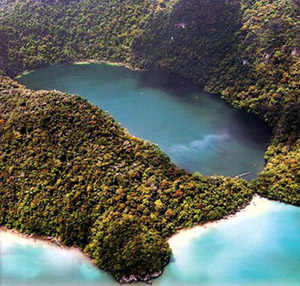 Langkawi abounds with quiet coves and long stretches of white sand beaches. There are reefs and sea caves to explore and marine parks for snorkeling and diving enthusiasts. Boat tours are available to the many small jewel-green islands that surround Langkawi.
Langkawi abounds with quiet coves and long stretches of white sand beaches. There are reefs and sea caves to explore and marine parks for snorkeling and diving enthusiasts. Boat tours are available to the many small jewel-green islands that surround Langkawi.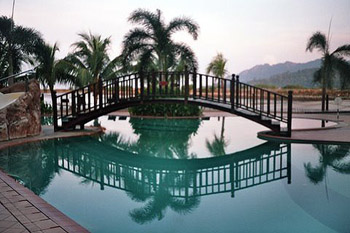 We left the island and cruised to a place where flocks of majestic bronze-coloured eagles surrounded our boat, diving and soaring around us. Continuing past by many small, jungle-covered islands we reach Pulau Beras Basah, “the Isle of Wet Rice” deserted except for the ubiquitous monkeys.
We left the island and cruised to a place where flocks of majestic bronze-coloured eagles surrounded our boat, diving and soaring around us. Continuing past by many small, jungle-covered islands we reach Pulau Beras Basah, “the Isle of Wet Rice” deserted except for the ubiquitous monkeys.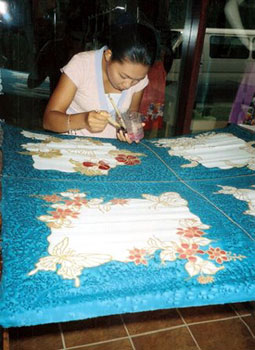 Next stop: a place that has great significance in the island’s history and legends, the Mausoleum of Makran Mahsuri. This beautiful young maiden came from Thailand (Siam) in the 1800’s and married the son of the tribal chief. She was respected and loved by everyone but her mother-in-law who was jealous and accused the girl of adultery. Mahsuri was sentenced to death despite her pleas of innocence. As she died, she cursed the island and said that for seven generations the island would not prosper. Fact or fiction, Langkawi did not begin to prosper again until 1987 after the movie “Anna and the King” starring Jodie Foster was filmed here.
Next stop: a place that has great significance in the island’s history and legends, the Mausoleum of Makran Mahsuri. This beautiful young maiden came from Thailand (Siam) in the 1800’s and married the son of the tribal chief. She was respected and loved by everyone but her mother-in-law who was jealous and accused the girl of adultery. Mahsuri was sentenced to death despite her pleas of innocence. As she died, she cursed the island and said that for seven generations the island would not prosper. Fact or fiction, Langkawi did not begin to prosper again until 1987 after the movie “Anna and the King” starring Jodie Foster was filmed here.
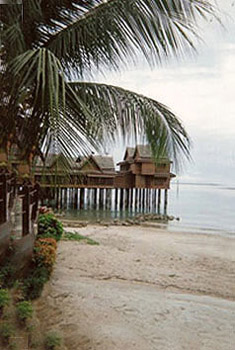 An adventurous boat trip from a Malay fishing village took us up the Kilim River through the dense and swampy mangrove forest passing by a rocky island (Flying Fox Island) to observe the hundreds of huge bats. These “flying foxes” or “flying dogs” have wing spans that can reach 1.2 meters. Dozens hung from the trees.
An adventurous boat trip from a Malay fishing village took us up the Kilim River through the dense and swampy mangrove forest passing by a rocky island (Flying Fox Island) to observe the hundreds of huge bats. These “flying foxes” or “flying dogs” have wing spans that can reach 1.2 meters. Dozens hung from the trees.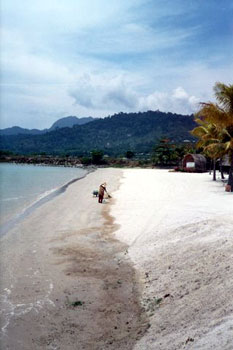 Farther along, we stopped at a fish farm We teetered along the wooden plank floats and watched our guide feed a manta ray named “Sexy Lips.” He invited me to hold the horseshoe crab or pick up the slippery polka-dotted moral eel but I wasn’t brave enough.
Farther along, we stopped at a fish farm We teetered along the wooden plank floats and watched our guide feed a manta ray named “Sexy Lips.” He invited me to hold the horseshoe crab or pick up the slippery polka-dotted moral eel but I wasn’t brave enough.